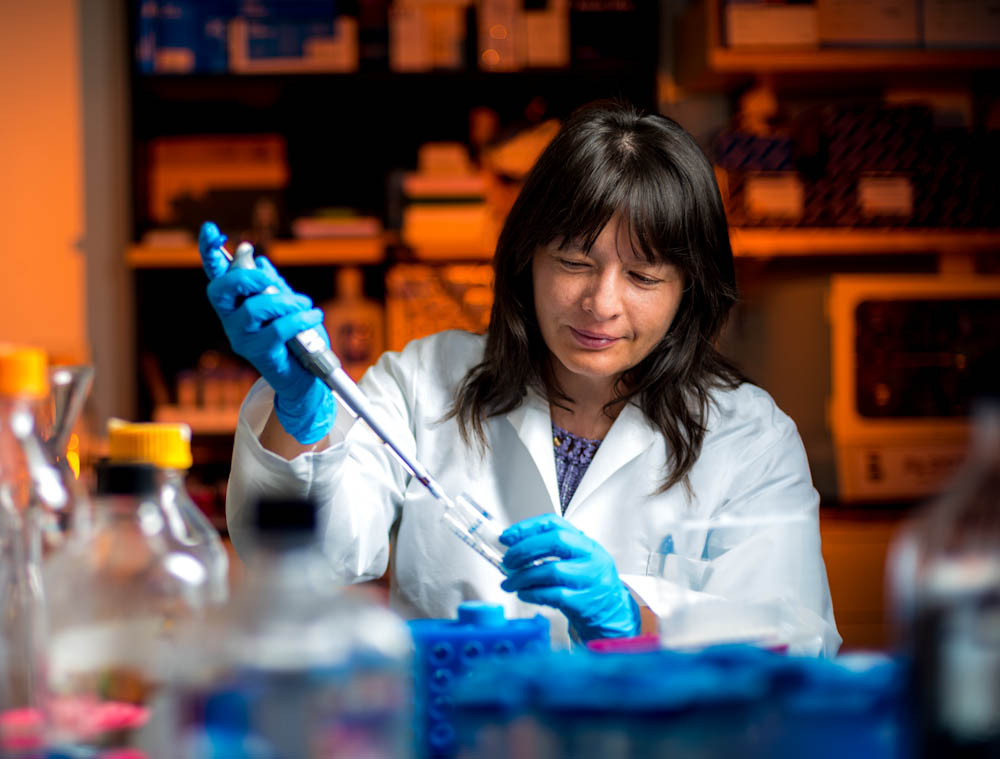- Cancer cells are enormously diverse — with variability in both their genetic and epigenetic composition.
- Such heterogeneity may drive tumor resistance to treatments.
- Researchers are investigating how targeting that cellular diversity may lead to more effective treatments.
- One such study demonstrated that potential link in breast cancer cells.
One of the biggest challenges in treating cancer is that the cells making up a tumor – say a breast or lung tumor – are enormously diverse, or heterogeneous. This tumor heterogeneity can be both genetic, meaning the DNA in the tumor cells differs from one cell to the next, and epigenetic, meaning that the DNA is the same but different genes are turned on or off from one cell to another.
Scientists are investigating what factors control cellular diversity in tumors and how such diversity can be lessened to make treatments more effective. In a new report, they say higher cell-to-cell variability in estrogen receptor-positive (ER-positive) breast cancer is associated with resistance to hormone-blocking drugs, such as tamoxifen and fulvestrant.
Led by Dana-Farber researchers Kornelia Polyak, MD, PhD, and Franziska Michor, PhD, the researchers demonstrated a link between KDM5B, a gene involved in epigenetic regulation, and cellular heterogeneity of breast cancer cells. Polyak and Michor are corresponding authors of the report in Cancer Cell.

They previously reported that KDM5B is often overexpressed in ER-positive breast cancers and is associated with shorter disease-free survival in breast cancer patients treated with hormonal therapy. Working with a laboratory estrogen-dependent breast cancer cell line, the scientists knocked out the KDM5B gene (and also the KDM5A gene) and found that the cancer cells were now more sensitive to fulvestrant, an estrogen-blocking breast cancer drug. Similarly, they showed that a drug that inhibits KDM5B increased the breast cancer cells’ sensitivity to fulvestrant.
The investigators then asked, if inhibiting KDM5B reduces the cancer cells’ resistance to hormonal treatment, could it be that it does so by decreasing the diversity of the breast cancer cells? By analyzing the RNA content of hundreds of single cancer cells before and after treatment with the KDM5B inhibitor, the scientists found exactly that – the cell-to-cell heterogeneity of the cancer cell population was reduced. Importantly, in both primary and metastatic ER+ breast tumors higher expression of KDM5B is associated with higher transcriptional (epigenetic) heterogeneity and worse outcome. Interestingly, transcriptional heterogeneity was independent of genetic diversity. These data imply that transcriptional heterogeneity may be an independent predictor of therapeutic resistance and decreasing it would decrease the risk of disease recurrence.
“These results provide strong experimental data to support our hypothesis that KDM5B [is a] key regulator of cellular transcriptomic heterogeneity, and decrease therapeutic resistance via this function,” they said.
First authors of the report are Kunhiko Hinohara, PhD, and Hua-Jun Wu, PhD.

Hello, how can I be part of this research or get tested for cellular diversity of the tumor.
Thank you
Hi,
Are there tests available at this day to test cancer tumors to KDM5B expression
This will be ground breaking. This too might explain the difference in aggressive heterogeneity in the ER positive disease
I have germ cell ovarian cancer stage 3,and is there any simple way to address this cancer?
Hi Mary Jo,
Thank you for reaching out. Here is where you can find more information on how ovarian cancer is treated at Dana-Farber: https://www.dana-farber.org/ovarian-cancer/treatment/
In the case that you need to make an appointment or get a second opinion, here is more information on that: https://www.dana-farber.org/request-an-appointment/
We are wishing you all the best,
DFCI